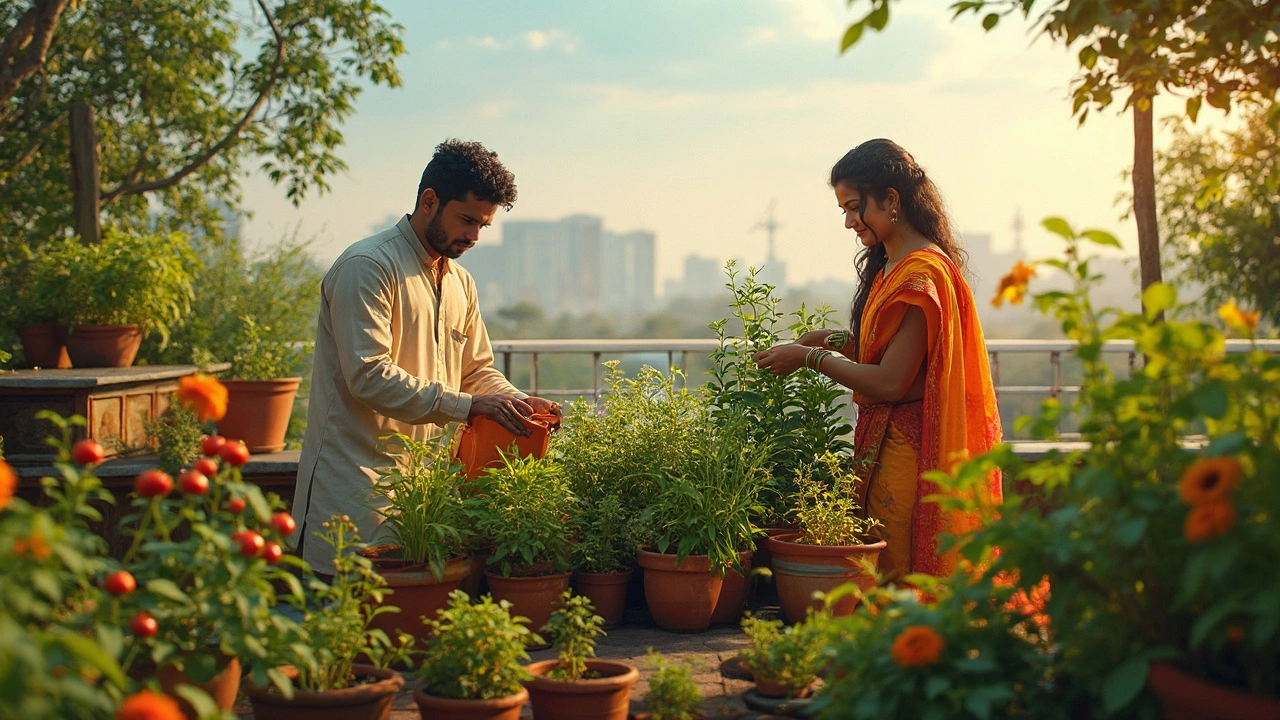Rooftop Garden: Simple Steps to Grow on Your Roof
Ever looked up at a flat roof and thought it could be a mini‑farm? You’re not alone. With a few smart choices you can turn that unused space into a lush, productive garden that saves money, cools your home, and makes you feel good.
Plan Your Space & Safety
First thing – check the roof’s load limit. Most modern apartments can hold a couple of hundred kilograms, which is enough for lightweight containers, soil, and plants. If you’re unsure, ask the building manager or a local contractor. Next, make sure the roof is waterproof. A sheet of pond‑liner or a good quality tarpaulin under your pots prevents leaks and protects the structure.
Measure the area and draw a quick sketch. Decide where the sun hits hardest – most rooftops get full sun for 5‑7 hours, perfect for tomatoes, peppers, and herbs. Shade‑loving greens like lettuce or spinach can go under a pergola or a simple shade cloth.
Watering & Plant Care
Water is the biggest headache on a roof because there’s no ground to hold moisture. Drip irrigation is a game‑changer. Bury the drip lines just a few centimeters under the potting mix, set the timer for early morning, and you’ll use 30‑50% less water than sprinklers. If you’re on a budget, a simple soaker hose or a DIY bottle‑drip system works just as well.
Pick a well‑draining soil blend – mix two parts garden soil, one part compost, and one part coarse sand or perlite. This keeps roots from rotting and lets water move through quickly. Add a slow‑release fertilizer to the mix for steady nutrition.
Choose plants that match your climate and rooftop conditions. Easy starters include basil, mint, and oregano – they love the sun and need minimal care. For a splash of colour, try dwarf marigolds or petunias. If you want veggies, go for compact varieties: cherry tomatoes, bush beans, and petite carrots.
Vertical garden ideas are perfect for limited space. Hang fabric pockets, use tiered shelves, or install a trellis for climbing beans and peas. Vertical setups also create airflow, reducing fungal issues.
Maintenance is simple. Check soil moisture with your finger – if the top inch feels dry, it’s time to water. Prune dead leaves, rotate containers every month for even sun exposure, and clean any debris to avoid pests.
Seasonal care matters too. In summer, watch for heat stress; a light misting in the evening can keep plants cool. In monsoon months, ensure drainage holes stay clear so water doesn’t pool and drown roots.
A few common mistakes to avoid: over‑watering, using heavy clay pots that add unnecessary weight, and planting deep‑rooted trees that exceed the roof’s capacity. Stick to lightweight containers like fabric grow bags or plastic pots.
Ready to start? Here’s a quick checklist:
- Confirm load limit and waterproofing.
- Map sun and shade zones.
- Pick lightweight containers and a well‑draining soil mix.
- Install a drip or soaker irrigation system.
- Choose sun‑loving herbs, veggies, or vertical plants.
- Set a watering schedule and monitor soil moisture.
- Rotate, prune, and enjoy the harvest.
Give it a try this weekend. In a few weeks you’ll see seedlings push through, and before you know it you’ll be harvesting fresh herbs right from your roof. Happy gardening!
Best Plants for Rooftop Gardens: Make the Most of Your Terrace Space
This article dives into the top plants that thrive on rooftop gardens. It breaks down what makes rooftop conditions tough, the best choices for edible and decorative plants, and how to care for them. You'll find practical tips, surprising plant options, and tricks for handling unique rooftop challenges like wind and sun. Whether you're starting from scratch or upgrading your green space, you'll walk away with ideas that really work.
About
Terrace Gardening
Latest Posts


Can I Just Put Perlite on Top of Soil? Here's What You Need to Know
By Alden Thorne Mar 11, 2025

Make Your Terrace Cozy: Easy Tips for a Warm Outdoor Oasis
By Alden Thorne Mar 26, 2025

Do Houseplants Need Misting? Truths About Indoor Plant Humidity Care
By Alden Thorne Jul 26, 2025

